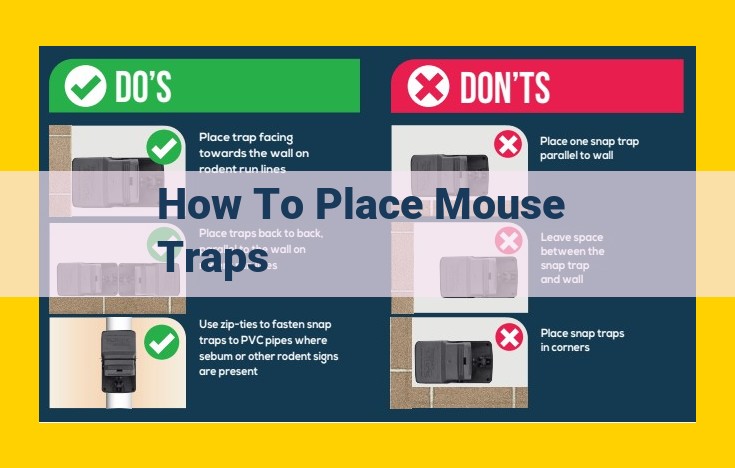To place mouse traps effectively, select areas where mice are likely to travel, such as near food sources or nesting sites. Position the traps perpendicular to walls or along corners where mice tend to run. Use multiple traps to increase chances of capture. Avoid placing traps in areas where children or pets may come into contact. Ensure traps are set securely to prevent escapes and accidents.
**Essential Mouse Trapping Components: Tools and Baits for Effective Control**
When faced with a mouse infestation, the first step towards effective control is gathering the necessary tools and baits. Mouse traps and baits, the two crucial components of mouse trapping, play pivotal roles in attracting, catching, and eliminating these pesky rodents.
Mouse Traps: Different Types and Their Effectiveness
The market offers a wide range of mouse traps, each with its unique design and mechanism. Snap traps are a popular choice, combining affordability with efficiency. They feature a spring-loaded mechanism that snaps shut upon contact, instantly killing the mouse. Live traps, on the other hand, capture mice alive, allowing for their release outside the home. Electronic traps employ a high-voltage shock to eliminate mice quickly and humanely.
Baits: What Attracts Mice
Selecting the right bait is essential for successful mouse trapping. Food-based baits, such as peanut butter, cheese, or bacon, are effective for luring hungry mice. Nesting materials, like cotton balls or shredded paper, can also serve as attractive bait, as mice seek these materials to build their nests. Additionally, manufacturers offer attractants specifically designed for mice, containing scents and flavors that are irresistible to these rodents.
Effective Trapping Strategies for Eliminating Mice
To effectively eliminate mice from your property, it’s crucial to employ strategic trapping methods. Placement Locations are paramount in this endeavor. Mice tend to frequent areas near food sources, such as kitchens and pantries, as well as water sources, like sinks and toilets. Nesting sites are also prime locations to set traps, as mice seek out warm, secluded places to build their homes.
Safety Precautions must be taken when setting traps to prevent accidents. Wear gloves to avoid contact with mice or their droppings. Place traps away from children and pets to minimize the risk of injury. Use non-toxic baits to avoid harming non-target animals or humans.
Additional Resources to Effectively Tackle Mice Infestations
To bolster your mouse trapping efforts, consider incorporating additional devices specifically designed for mouse control. Repellents, containing natural ingredients such as peppermint or cinnamon, can deter mice from entering your home. Ultrasonic deterrents emit high-frequency sounds that are inaudible to humans but irritate mice, forcing them to seek shelter elsewhere. Additionally, explore environment-specific traps, such as attic traps or crawl space traps, to effectively target mice in various locations.
Consult with a licensed pest control professional for expert guidance and comprehensive solutions. Their knowledge and experience enable them to assess the severity of your infestation, recommend the most effective trapping strategies, and implement tailored programs to eliminate mice and prevent future invasions. Professional pest control services provide peace of mind, ensuring a thorough and safe approach to mouse removal and prevention.
